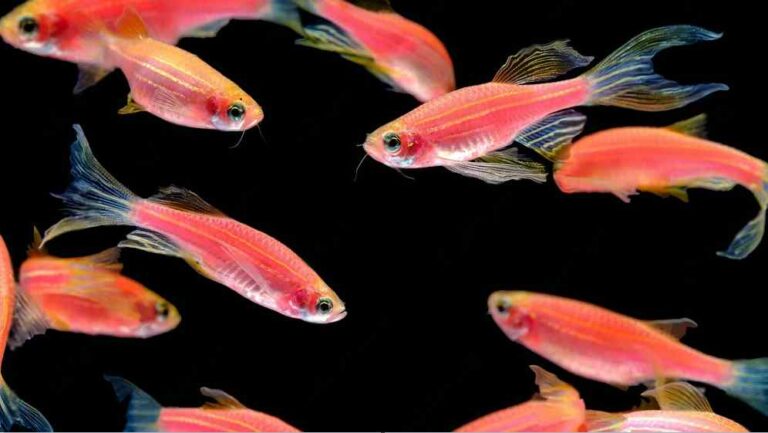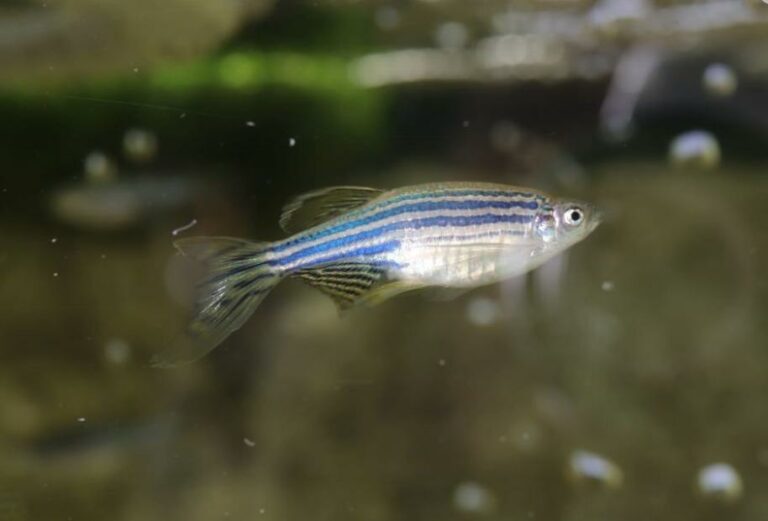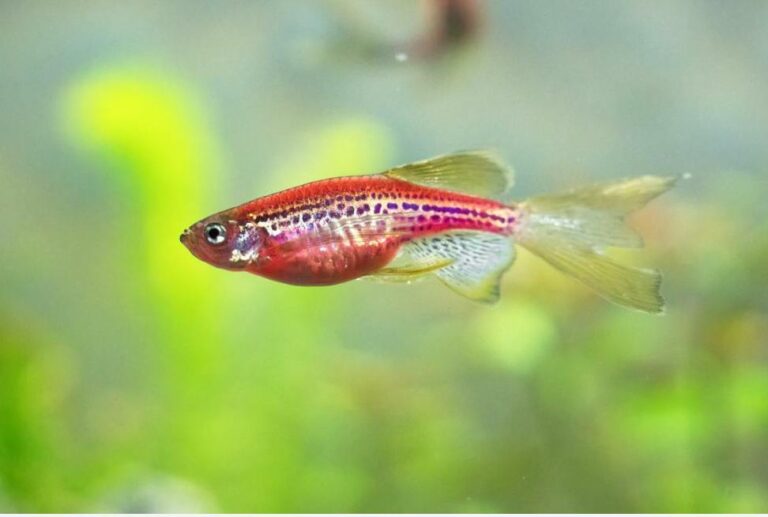The Egg Laying of Zebra Danios
Breeding Zebra Danios is possible but takes some finesse since they are egg scatterers, not livebearers. This means the female will deposit hundreds of eggs throughout the tank that the male must externally fertilize. It’s a delicate process, but don’t let that intimidate you! You can nurture a new generation of these radiant fish with the right environment and a watchful eye.
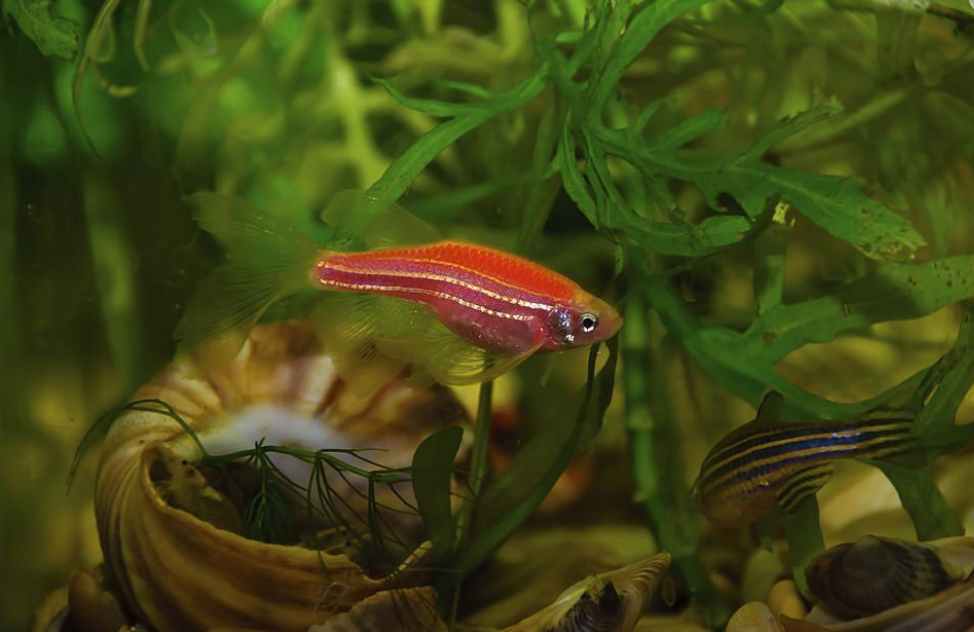
Table of Contents
- The Prolific Egg Laying of Zebra Danios
- The Spawning Frequency of Zebra Danios
- The Egg-Scattering Spawn of Zebra Danios
- Breeding Zebra Danios
- The Delicate Hatching of Zebra Danios Eggs
- Attentive Care for Zebra Danios Eggs and Fry
- Raising Juvenile Zebra Danios to Adulthood
- Can Female Zebra Danios Lay Unfertilized Eggs?
- Conclusion
The Prolific Egg Laying of Zebra Danios
As you eagerly await the egg-scattering courtship display of your Zebra Danios breeding pair, you may wonder how many tiny eggs you’ll soon be caring for. Luckily, Zebra Danios are prolific egg layers capable of producing impressive quantities when conditions are ideal.
A healthy, mature female can lay between 60 to 130 eggs during a single spawning session. That’s quite a lot of eggs for a fish that reaches only about 2.5 inches long! She can hold this abundant cache of eggs due to the ovipositor organ behind her abdomen.
With proper tank setup and water parameters, most of these eggs will get fertilized by the male. However, realistically only 40% to 60% of the eggs laid will ultimately hatch. Even in optimal breeding conditions, not every egg makes it through the delicate fertilization and hatching process.
As the female twist and turns, scattering her eggs across the tank, some will fall on unsuitable surfaces and fail to get fertilized by the chasing male. Others may get attacked by fungi or simply stop developing. This natural rate of attrition is perfectly average.
The key is optimizing conditions to ensure the highest possible ratio of hatched fry. With the proper aquarium setup, 40 to 70 viable Zebra Danios babies are a reasonable expectation from a single successful spawning session.
The Spawning Frequency of Zebra Danios
Now that you’ve witnessed the dazzling egg-scattering spectacle of your Zebra Danios, you may be wondering how often they can repeat this elaborate breeding ritual. Unfortunately, getting Zebra Danios to spawn frequently in captivity takes skill.
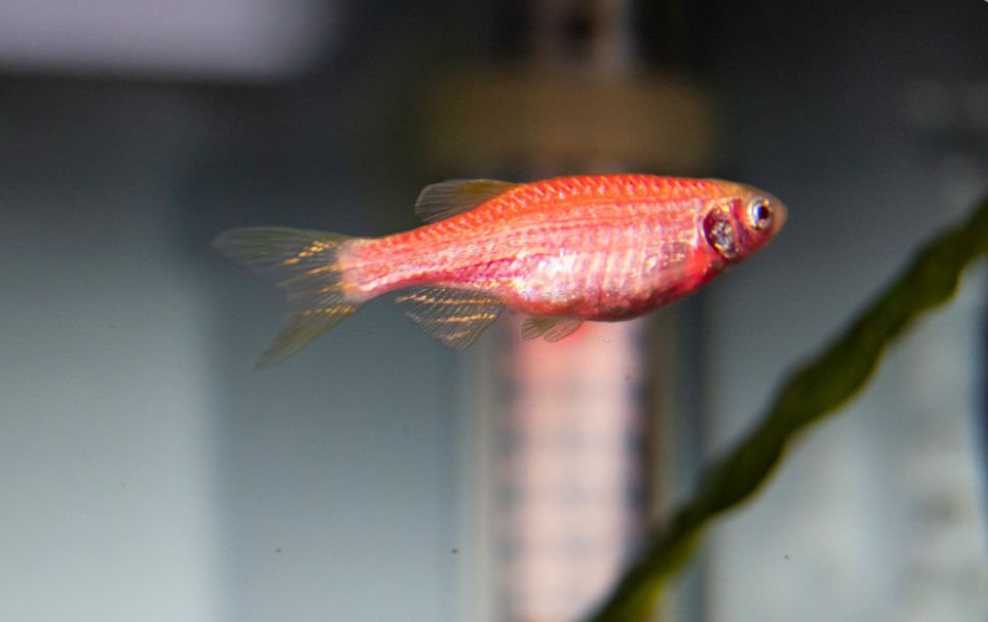
Zebra Danios may breed in the wild every 2-3 weeks when conditions are pristine. But replicating their ideal natural environment in a home aquarium is challenging. These fish won’t readily produce independently without the keeper’s strategic interventions.
You’ll need to condition them with live foods intentionally, optimize water parameters, and simulate rainfall and dusk cues. Even then, their health and stress levels impact frequency.
Older, less vigorous fish or those living in suboptimal tanks likely won’t spawn monthly. Zebra Danios over 12 months old see substantial declines in breeding activity.
Expect newly acquired young adults in a robust planted tank to breed every 4-6 weeks with your assistance potentially. But don’t be surprised if it takes longer between successful spawnings. Patience and persistently perfect conditions are essential.
The most crucial factor remains vigilantly maintaining the Zebra Danios’ health and reducing stress. Perform regular partial water changes, test water quality, and provide a varied, protein-rich diet. Keep tankmates peaceful and decor naturalistic.
With diligent care, your Zebra Danios breeding pair may reward you with eggs up to a few times per season. But don’t force it – let their colorful courtship display happen on its schedule. Then you can again enjoy raising the next generation of their shimmering progeny.
The Egg-Scattering Spawn of Zebra Danios
One of the charms of breeding Zebra Danios is watching the female twist and dart around the tank, scattering her eggs across all surfaces. But where exactly should you expect these hundreds of tiny eggs to end?
Unlike some fish that lay eggs in one nesting site, Zebra Danios randomly broadcast spawn without preference. Their tiny adhesive eggs, just over 1 millimeter, can stick anywhere the female releases them.
Many will settle on the bottom, especially if the substrate is soft plants or moss. Java moss is ideal as it cradles the eggs while hiding some from hungry parents. Even small crevices in decor and driftwood can catch passing eggs.
However, Zebra Danios aren’t only bottom spawners. Their buoyant eggs frequently sprinkle on broad-leaf plants, vertical wood, and filter intake. Shining your flashlight over all surfaces will likely reveal a smattering of transparent eggs clinging everywhere.
This scattered technique helps some eggs survive away from the watchful eyes of Zebra Danios looking for an easy caviar snack. But it also means diligently checking to collect the most eggs possible once the parents are removed.
So when your Zebra Danios finally spawn, be ready to glean every surface for their precious scattered eggs. With close attention, you’ll gather the largest possible hatch to enjoy watching the tiny fry emerge and grow into the next generation.
Breeding Zebra Danios
Now that you’re hooked on breeding Zebra Danios after your first successful spawn, you may wonder how to optimize the process to hatch large broods consistently. Mastering Zebra Danios breeding requires carefully controlling multiple environmental factors.
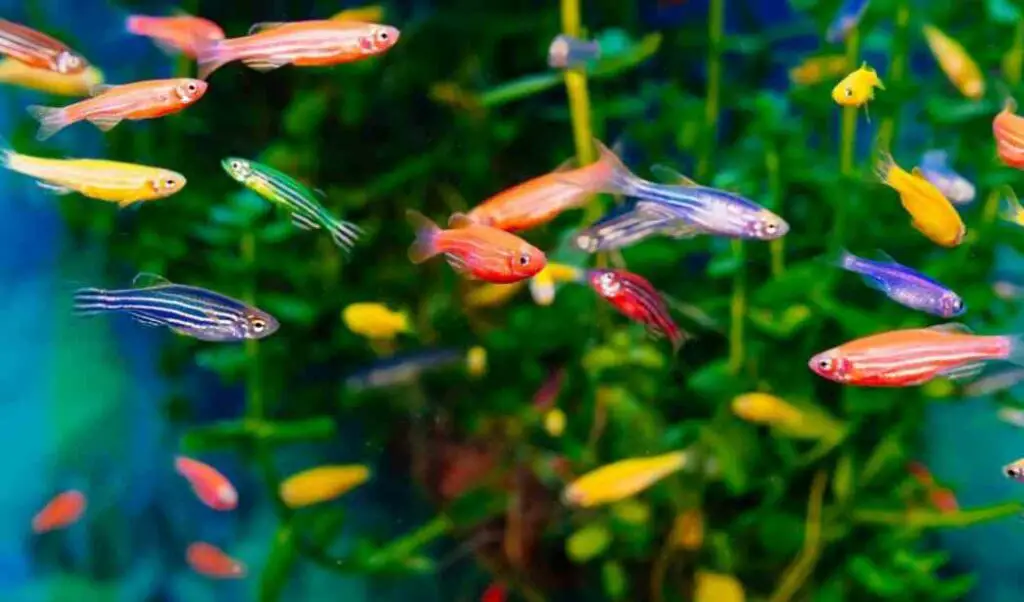
Start by setting up a dedicated 10-gallon breeding tank with dim lighting, plenty of hiding spots, and very soft, acidic water between pH 5.5 – 6.5. Aquatic mosses make great spawning surfaces. Maintain a stable temperature of 77°F; fluctuations will disrupt breeding.
Pick active, healthy breeding candidates under a year old with vivid coloration. Condition them beforehand with high-protein live foods like bloodworms and brine shrimp. This helps maximize egg production and viability.
Initiate spawning by simulating rain showers and introducing the pair into the tank at dusk. The falling hormone levels will trigger breeding instinctively. But if Zebra Danios fail to spawn overnight, don’t despair. Keep optimizing the parameters until they’re ready.
Once you have eggs, remove the parents promptly to avoid them snacking on their eggs! Then maintain immaculate water quality as the eggs develop, diligently siphoning away debris without disturbing them.
Within 24 hours, the tiny fry will emerge, requiring infusoria and finely crushed foods. Rear the sensitive fry in the protected breeding tank until they grow stronger.
Patience and persistence are required to hone the art of Zebra Danios breeding. But the reward of watching a new generation of colorful Zebra Danioss grow and thrive makes it all worthwhile. So cultivate the ideal conditions and let their natural instincts take over.
The Delicate Hatching of Zebra Danios Eggs
After your Zebra Danios’ spectacular spawning show, the real work begins, nurturing the hundreds of scattered eggs through hatching. Here’s what to expect in the 24 hours after the eggs are laid:
Though a female may lay up to 130 eggs, realistically, only about 40-70 will get fertilized and develop. Remove the parents promptly so they don’t snack on their future offspring!
Turn off all lights to reduce fungal growth on the eggs. Then patiently wait as the tiny 1 mm eggs incubate on the tank surfaces. Avoid disturbing them during this fragile stage.
Within 24 hours at 77°F, microscopic tails will emerge as the embryos develop inside the egg membranes. Soon, tiny snouts will become visible, too, signaling the fry are ready to hatch.
Carefully siphon away any fungus-covered unfertilized eggs. Healthy eggs will appear clear with a tiny Zebra Danios tail inside. The fry will begin wriggling and break free on its own.
Newly hatched fry still have a small yolk sac protruding from their belly, providing initial nourishment. They won’t swim actively or eat food for 48 hours.
Keep water immaculate as the fry absorb their yolk and gain strength. Be patient – soon, you’ll have a swarm of tiny, fast-darting Zebra Danios ready for infusoria and finely crushed foods!
Attentive Care for Zebra Danios Eggs and Fry
Your work is just beginning once the Zebra Danios eggs hatched. Now you’ll need to care for the tiny delicate fry meticulously. Here are some tips for raising them through this critical developmental stage:
- Perform frequent small water changes to keep the water pristine – any ammonia or nitrites can be deadly to fry. Target 10-25% daily.
- Feed freshly hatched brine shrimp or micro-worms multiple times per day. Crush food finely or use powdered fry food.
- Avoid strong water flow that can sweep the poor swimmers away. Use an air-powered sponge filter.
- Keep water temperature steady at 77°F. Use a submersible heater guarded so the fry doesn’t get trapped.
- Watch for signs of disease like fungus, lethargy, or loss of appetite and treat promptly. Methylene blue can help.
- Transfer fry to a larger rearing tank once they reach adulthood size of 1.5 inches. Dense schools reduce stress.
With diligent monitoring and frequent feedings, your tiny translucent fry will grow into brightly colored juveniles mirroring their parents.
Raising Juvenile Zebra Danios to Adulthood
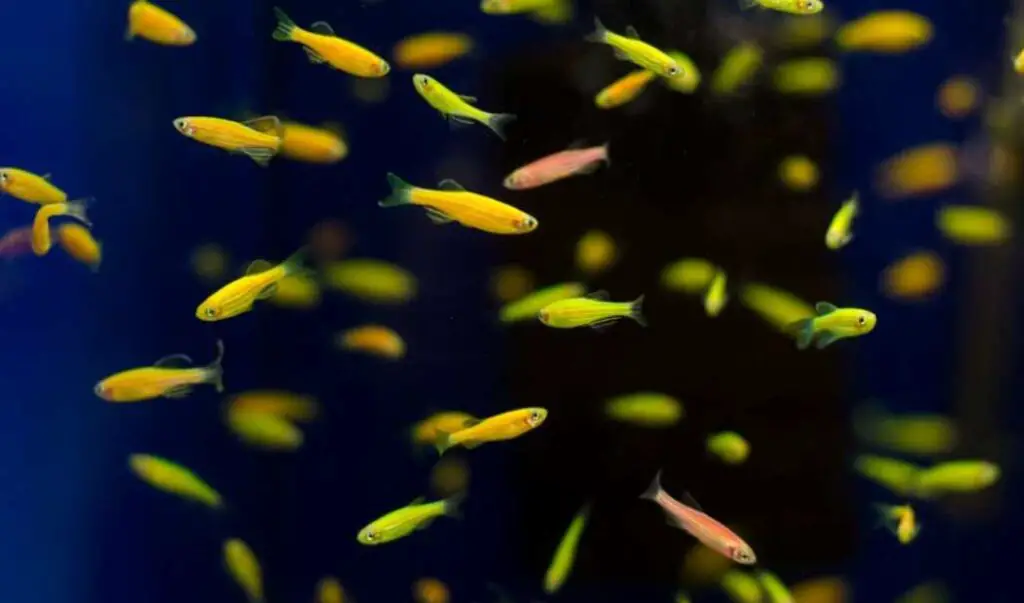
Once your precious Zebra Danios fry passes the initial delicate stage, watch them grow into vibrant juveniles! Here’s how to raise them to adulthood:
- After 1-2 weeks, the fry will be free-swimming and ready for newly hatched baby brine shrimp and micro-worms. Offer several small meals per day.
- Supplement with powdered fry foods high in protein and nutrients to fuel rapid growth. Vary their diet for the best health.
- Do frequent partial water changes to prevent any accumulation of waste – at least 25% twice a week.
- After 6-8 weeks, juveniles will reach around 1 inch long and exhibit faint striping. Now offer finely crushed flake foods.
- At 12 weeks, Zebra Danios’ colors and patterns will be fully apparent in 1.5-inch young adults. Transition them to a roomy grow-out tank.
- Wait until juveniles reach about 2 inches long before mixing them with general community tankmates to avoid predation.
With time, attentive feeding, and pristine water, you’ll be satisfied to watch your tiny hatchlings transform into a dazzling school of adult Zebra Danios!
Can Female Zebra Danios Lay Unfertilized Eggs?
Yes. As prolific egg scatterers, female Zebra Danios can sometimes release unfertilized eggs even without males present to spawn with. However, these unfertilized eggs will not hatch or develop further.
Zebra Danios females regularly produce eggs as part of their reproductive cycle, regardless of ideal spawning conditions. If no male is available for courtship, fertilization, and scattering, she will still expel the eggs into the water.
Without sperm from a male to penetrate and fertilize the eggs, they will remain as non-viable bundles of genetic material. The female may then simply consume these excess eggs to reabsorb the nutrients.
While harmless, this occasional release of unfertilized eggs can concern owners thinking their Zebra Danioss spawned. However, it is part of the female’s natural rhythmic egg production and does not indicate an actual spawning event.
Rest assured, if males are absent, the expelled eggs pose no risk to water quality or the female’s health. They will fail to hatch or develop in any way. Proper breeding and scattering of viable eggs requires the participation of both sexes through an elaborate courtship ritual.
So, in summary, female Zebra Danios can and do expel unfertilized eggs without males present to breed with. But these eggs will not progress further or impact the tank conditions. Only fertilization by males allows the eggs to hatch into free-swimming fry.
Conclusion
Breeding Zebra Danios is not a challenging task, but you should work hard to get maximum results from the breeding.
You need to take parents Danios correctly and pay extra attention to them once they lay the egg. Once the egg hatch, baby Danios swim in the tank.
Feed high-protein fish food for baby Danios until they grow up. Provide all other necessary things such as lighting, plants, hide space, and extra aeration.
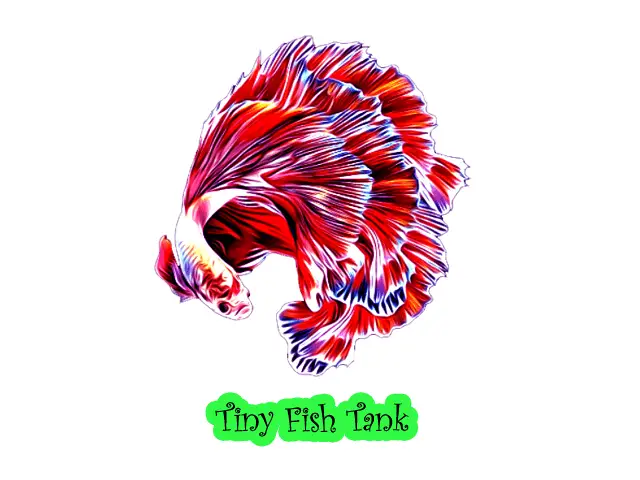
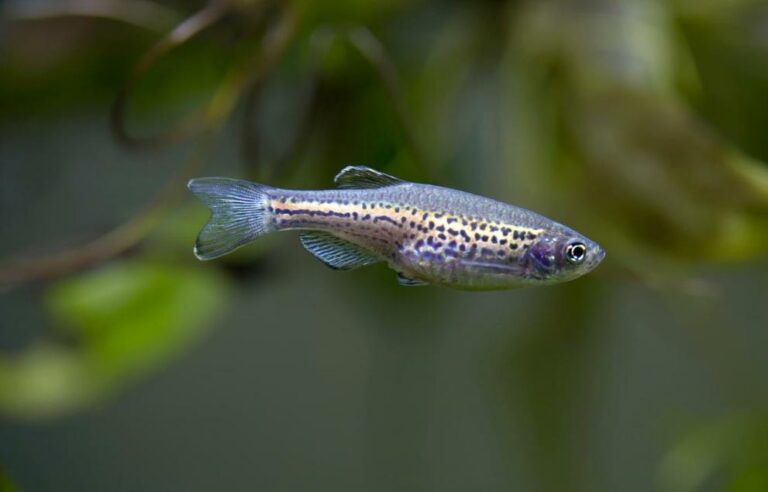
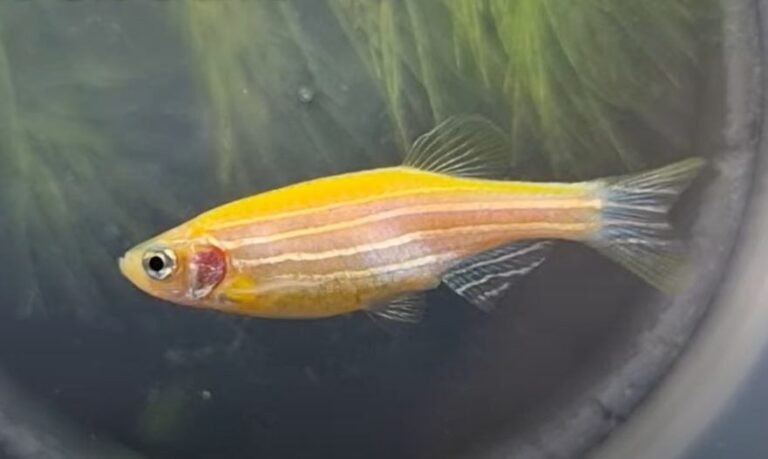
![The Curious Case of the Disappearing Zebra Danios [5 facts]](https://www.tinyfishtank.com/wp-content/uploads/2023/08/Disappearing-Zebra-Danios-768x458.jpg)
